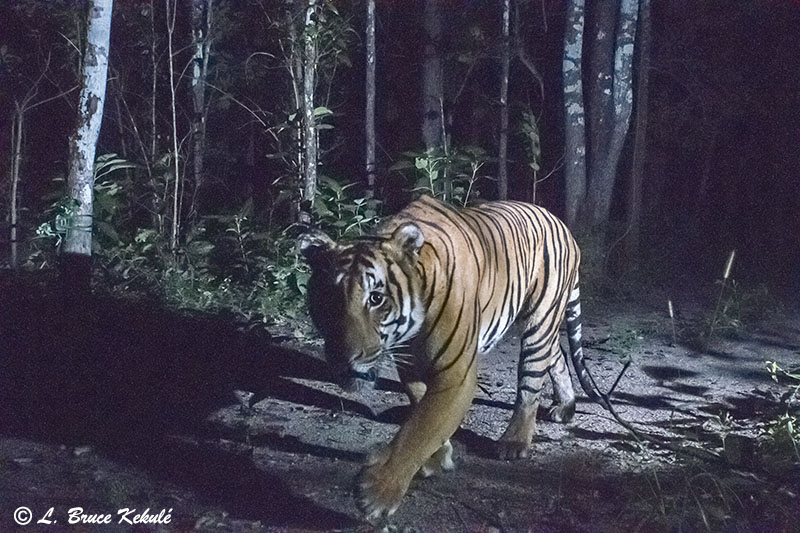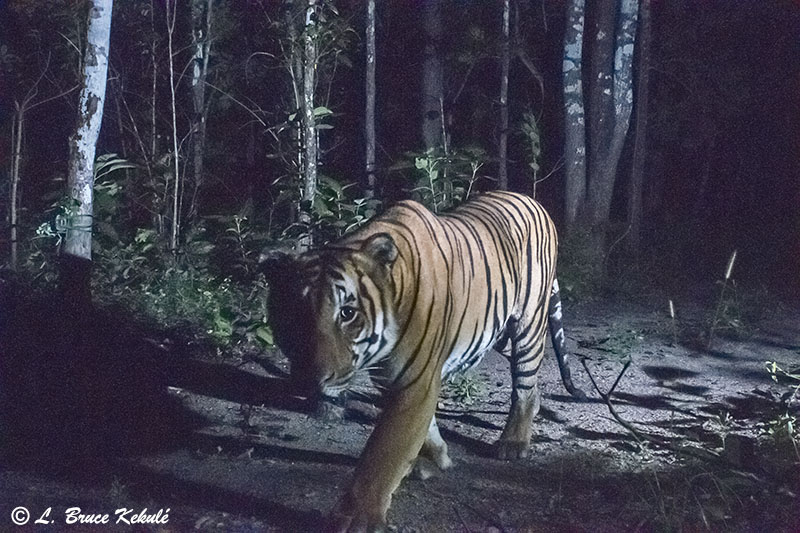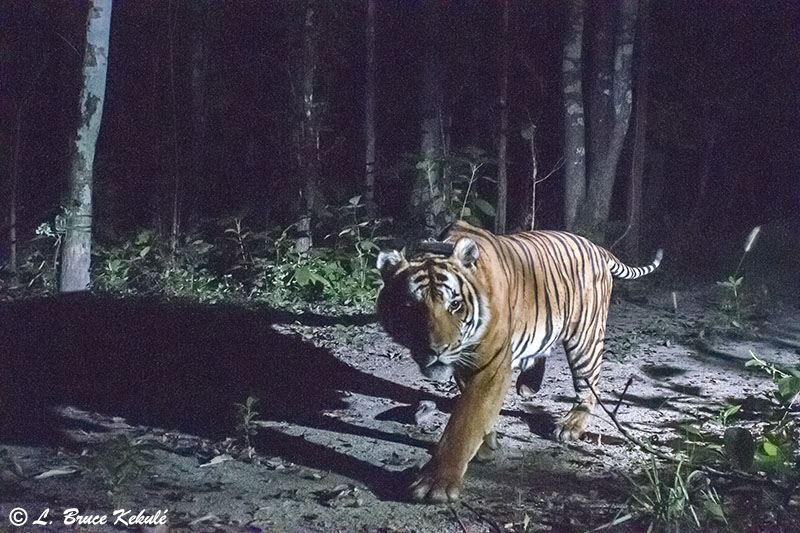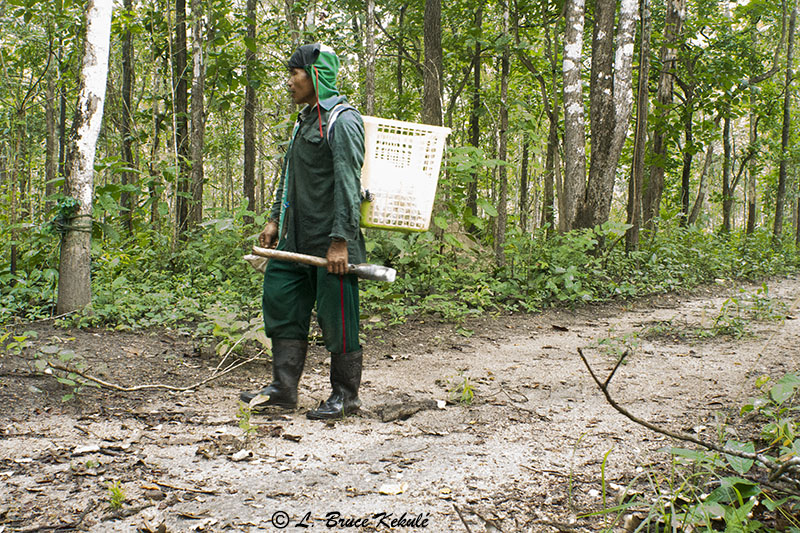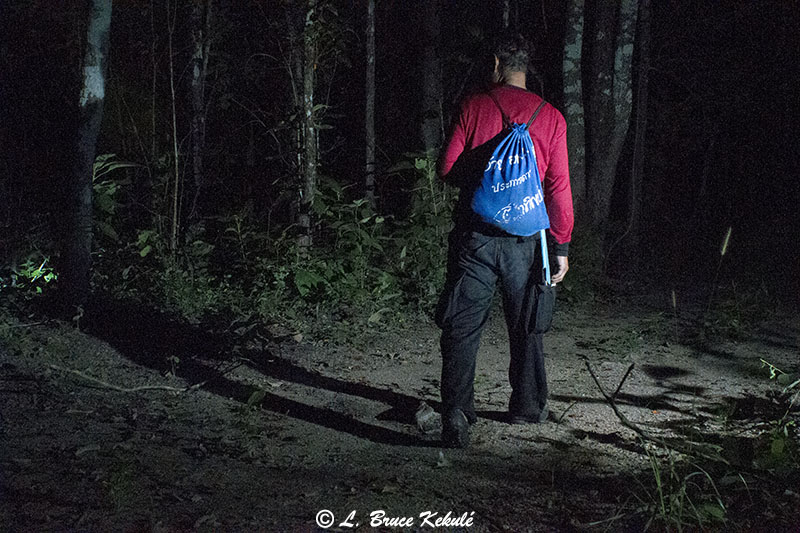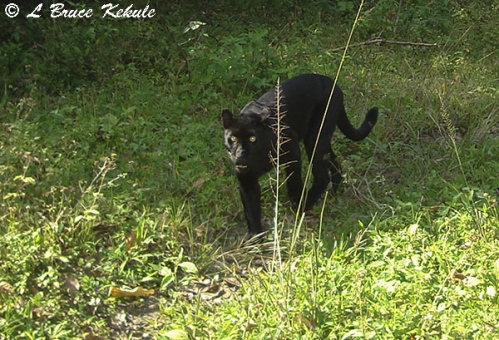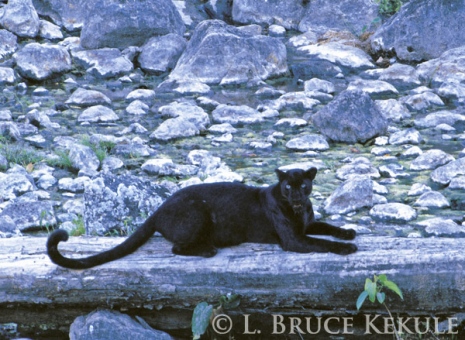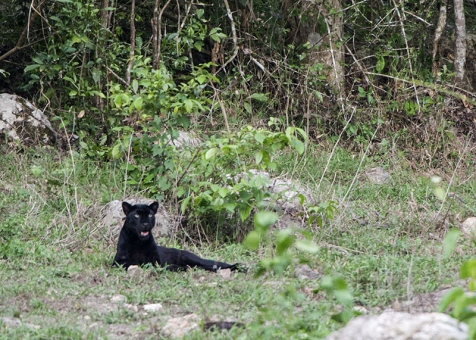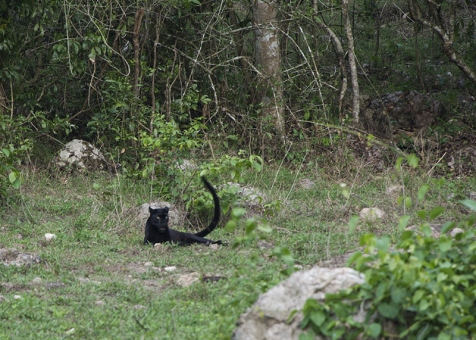Posts Tagged ‘wild feline’
An ISO Blunder
Sony A500 catches a tiger and poachers at ISO 12,800
Sometimes, mind lapse is a serious problem for a senior citizen like myself. I set my Sony A500 on a trail just inside the boundary of my favorite protected area in Thailand. This location has already produced some amazing shots of black leopard and tiger plus many prey species like elephant, banteng, barking deer, sambar and wild pig.
Tiger passes the Sony A500…!
Tiger with a radio collar passes the Sony…!
On the negative side of things, this cam has also caught poachers and gatherers as they illegally sneak into, and exit the sanctuary. Poor patrolling and enforcement with many loopholes allow these undesirables to penetrate and poach animals and forest products for sale or personal use. It is a serious threat to all of Thailand’s protected areas and is on-going problem for the Department of National Parks (DNP)…!
Poachers with baskets and digging tools after bamboo shoots during the rainy season…!
Wildlife poachers with no basket…!
This Sony has been working very well catching a male tiger with a radio collar at night several months ago. I noticed that several people on the forum were setting their cams at ISO 200 and thought I would give it a try. When I left the cam, I thought it was at the 200 setting.
A month or so later, I went back to change out batteries, card and desiccant, and saw the same tiger with a collar had visited twice plus some poachers caught using the same path. When I downloaded the images, I was shocked to see the ISO at 12,800…what the heck happened here…?
I don’t know but it looks like I did not save the settings before buttoning up the cam and somehow pushed the 12,800-button. This was of course another disappointment. The shots are cluttered with noise and I have tweaked the images but it’s a fact: photos with ISO this high is absolute rubbish and can only be counted as record shots.
Another thing: only one flash on the right was working hence the deep shadow. I found a broken wire on the other flash so brought the whole unit in for repair. I will be setting another Sony (A55 with a 55mm lens) DSLR cam with 4 flashes (hard-wired) to see what might pass-by.
The ‘Tiger Hunter’ setting a Bushnell Trophy Cam…!
The A500 cam is now back in the forest but at a new location with settings at ƒ8 – 1/125 – ISO 200. It was working well firing off 4-shot strings during walk test and hopefully it will produce some good shots now. Leopards and tiger plus all the other denizens of the Thai forest use this trail so I can only wait till I get back to the cam in a couple weeks.……!
Indochinese tiger male caught on video and DSLR
A video and still photos of an Indochinese tiger in the Western Forest Complex of Thailand. This male cat was camera trapped in the afternoon and then in mid-morning…a beautiful carnivore.
The message is the same: these magnificent cats need 100% increase in protection and enforcement as they have become extremely rare in the wild. Unfortunately, some bad people chase after them for bones to be sold on the black market…! The main worry is that help will come too little and too late to really save the tiger and other creatures of the Thai forest…! Enjoy the beauty of raw nature but never forget this message: We need to work hard to change things so these magnificent cats will continue to roam the forest…!
A Black Leopard in Broad Daylight
A rare encounter: A black cat appears deep in the interior of the Western Forest Complex
My first black leopard in the late afternoon sun showing its spots some 15 years ago.
It is late April in the forests of the Western Forest Complex, one of my favorite places in Thailand. The first rains have come and doused the dangerous forest fires that spread throughout the area during the dry hot season starting in March and ending in May.
As usual, I’m setting-up camera traps at a hot-springs (mineral deposit) not far from a ranger station some 50 kilometers deep in the interior accessible only by a dirt road.
This natural seep is visited by all the large mammals including tiger, leopard, elephants, gaur, banteng, tapir, sambar and many other smaller creatures, and provides excellent opportunities for some great animal shots.
As I was going through a few of my camera traps changing out cards and batteries, I decided to have a quick look at a 2GB card that was in one of my cams.
A black leopard in mid-afternoon camera trapped on a trail to the hotspring.
Imagine my surprise to see a shot of a ‘black leopard’ in mid-afternoon walking up a trail shown in the story. Other denizens caught in this series include elephant, tapir, sambar, wild pig and muntjac (barking deer) over a month period back in February of this year. The leopard was truly a bonus and I had actually closed out the program with this cam.
This black leopard brought back fond memories of this place more than 15 years ago. I was sitting in a tree blind up by the hot springs when a black leopard walked out into the open about 4pm and posed for me at several places for over the next hour.
Those were in the old days of slide film, and I did not know how good the shots were until the film was processed. A few images are shown here from that lucky sequence many years ago. The sun was low and the black leopard showing its spots is one of my best wildlife photographs ever.
Posing on a fallen tree at the beginning of my career of wildlife photography.
Sometimes things happen in succession that boggles the mind. On May 6th, I posted the ‘black leopard’ camera trap image on my website. The next day I left Bangkok very early in the morning and arrived at the hot springs. I was back to reset camera traps, and this time to sit at the base of the old tree for some through-the-lens work. Who knows what might show-up.
Resting in the late afternoon and scoping out the area for prey, May 2013.
This black cat stayed for about 10 minutes.
A rare carnivore still surviving in Thailand.
Another once in a lifetime encounter as it leaves the mineral deposit.
I was with my good friend Sarawut Sawkhamkhet, a Thai wildlife photographer. We arrived and set-up a temporary blind about 3pm. The weather was warm and balmy with nice clear-blue skies.
At 5:45pm, the unthinkable happened! A ‘black leopard’ appeared out of the forest near the springs and walked over for a drink, and then disappeared for a short while. Then this magnificent creature came back and flopped down on all fours twitching its tail looking straight at us and staying for about 10 minutes before going back in the forest where it had come from.
The leopard (Panthera pardus) described by Linnaeus in 1758 is the second largest cat in Thailand. Once upon a time, leopards could be found in most forests of the Kingdom. These felines are still surviving quite well in protected areas in the West, and many forests in the South. The central, eastern and northeastern regions have no reports of leopard for long time now.
Pound for pound, the leopard can take on some seriously large animals several times its size. The leopard is closely related to the jaguar of South America. Both have a spotted coat pattern and incidence of ‘melanism’ or black phase. Many people have a misconception about the black leopard (also known as the black panther) as a separate species but in fact, it is the same as the yellow phased leopard.
The present distribution of the leopard is restricted to Asia Minor, India, Southeast Asia, the Himalayas, Tibet, China, Siberia, and Africa. Fossils of leopards have been found in Pleistocene deposits throughout Europe, the Middle East, Java, and Africa, some 1.5 million years old, indicating the leopard arrived after the tiger which has been around for about two million years.
These secretive cats are mainly nocturnal but in some localities, they are active in the day too. Their populations and ranges are difficult to determine but radio tracking of collared animals has shed new light on their movements and areas they live in.
Sighting a leopard in Asia is extremely difficult, and even catching a rare glimpse of this very essential top predator is tough due to its solitary and stealthy behavior. However, luck can sometimes play an important part in viewing the leopard and I feel lucky to have seen and photographed them on quite a few occasions.
My most thrilling or heart stopping adventure with a black leopard happened in Huai Kha Khaeng about five years ago while I was sitting up on a bluff overlooking the river. A photographic blind was erected on the rock-face about 20 meters up with a small trail that enabled me to get into the hide. The sun was bright and the weather was warm during the dry season.
About 9am, several monks down by the river passed on but did not see the camouflaged structure as they went their way. After that, I came down for lunch and set some camera traps at a mineral deposit nearby. At 2pm, I settled back in the blind and began a vigil of the river. I started to feel a bit groggy as the sun was beating down on my position. I moved my camera in to save it from the direct sunlight.
All of a sudden, I was startled by a guttural growl outside the enclosure. I stood up peering out the window and came face to face with a huge round black head and yellow eyes about two meters away that penetrated my soul. My first instinct reaction; it was a big black dog. But that quickly changed as the creature stared intently at me before bounding down the trail it had come up. The big cat was gone in a split second. Of course there was not enough time to get any photographs. The incident surely is etched in my memory.
Without doubt, the future of the leopard depends on one thing only – the complete protection of the remaining forests where they live. If the national parks and wildlife sanctuaries remain intact with a high number of prey species, the big cats will survive. But if over-development, poaching and encroachment are allowed to continue, the large cats will eventually disappear.
Unfortunately, too much time and money is wasted by too many organizations talking about saving wildlife and their habitats, with very little actually being done. Human population growth will eventually destroy most wild places. Only true protection by some dedicated people will slow the destruction of nature’s precious wildlife and wilderness areas. It is hoped the leopard, and the tiger, will continue to survive as they have for millions of years.


